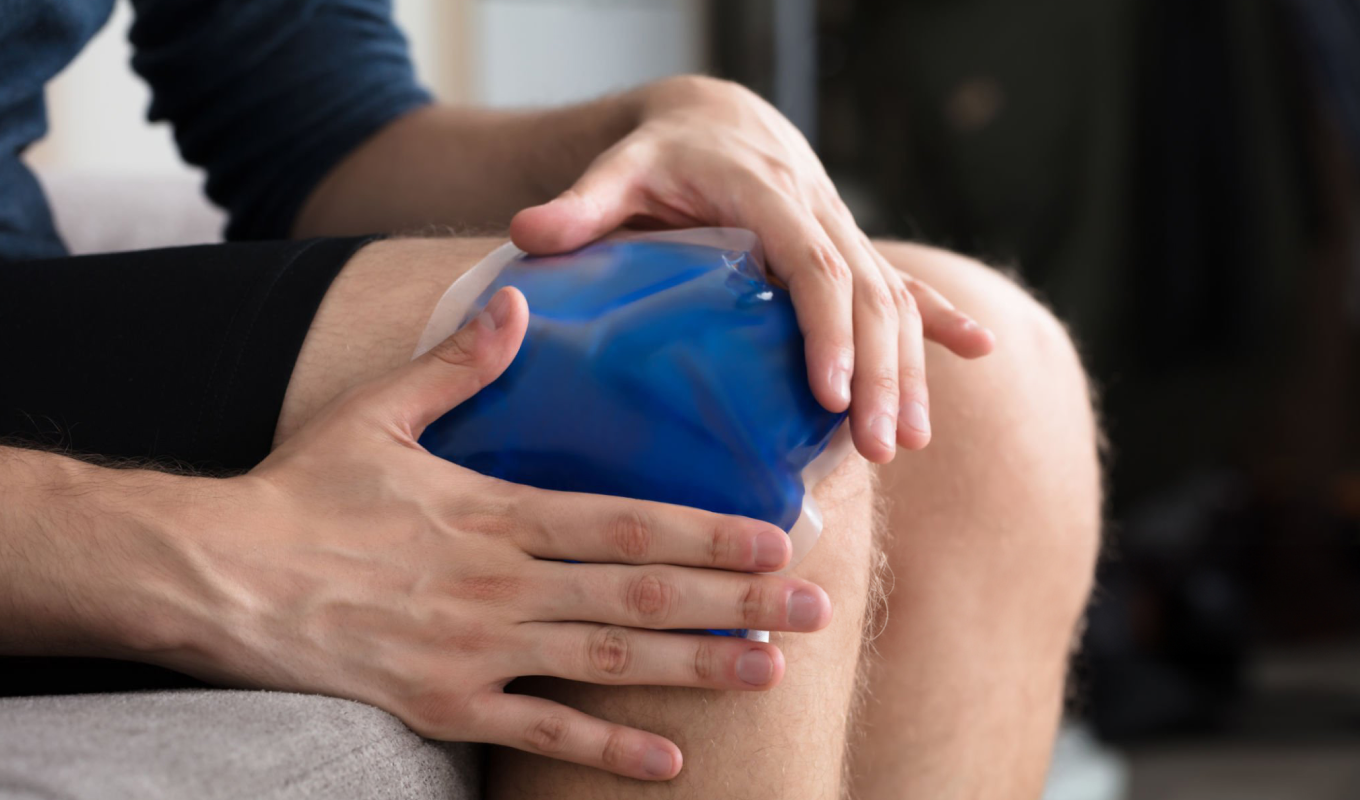Heat or Ice? Your Guide to Managing Knee Pain

We are often reactive to knee pain. Exercising our knees is an afterthought — at best — unless that’s where you feel pain.
When we think about exercising our bodies and strengthening core muscle groups, the arms, shoulders, back, and legs all come to mind… but the knees? Never a priority. We often forget that the knees support the entire body’s weight, making them tough but not indestructible.
Something as simple as wearing the wrong shoes can add excess stress on your knees. That’s when heat and ice treatments come in handy for managing knee pain. Knowing when to use which can help get you on the right track to pain-free, healthy knees.
Heat Therapy for Knee Pain
Heat helps increase the blood flow in your body. It encourages your blood vessels to dilate, boosting circulation, which is how much-needed nutrients and oxygen reach the surrounding muscles. A warm bath, compress, or heating pad can help your knees relax, loosening the joints, and lessening stiffness.
Treatments involving heat are typically used for chronic, long-lasting knee pain or, again, stiffness in the joint that leads to discomfort and pain. This kind of pain typically points to arthritis or lingering effects from recent injuries.
A physical therapist can actually help maximize the benefits of heat therapy while building a comprehensive treatment plan combining heat and manual therapies. While heat therapy aids in alleviating pain and stiffness, physical therapy provides a structured approach to address the root causes of chronic knee pain by:
- Identifying the specific factors contributing to your knee pain.
- Tailoring exercises to focus on flexibility, joint mobility, and knee strength.
- Using manual therapies to improve joint mechanics and muscle function.
- Providing patient education on daily activities, posture, and pain prevention.
- Guiding the use of heat therapy (or ice) as part of a broader treatment plan.
- Developing strategies for sustained knee health to prevent future injuries.
Cold Therapy for Knee Pain
When to ice and when to heat is not a guessing game. Each has a very specific purpose, and cold therapies should be your go-to for acute injuries or new swelling. It’s a great emergency response within the first 24 hours that your knee pain starts.
.png?width=1360&height=353&name=Infographic1%20(1).png)
You’ve likely already heard of the RICE method:
- Rest
- Ice
- Compression
- Elevation
This should be used as soon as possible following a sprain or injury around the knee. A key component of this method: applying ice to the joint! The cold sensation not only helps with pain relief but also reduces blood flow to the area, minimizing swelling and inflammation.
Ultimately, healing takes time, and there’s no quick fix to a knee in pain. While the RICE method is a great start following an acute injury, it's just the first step.
Bounce Back from Knee Pain with Physical Therapy
For longer-lasting, effective treatment, consider working with a physical therapist. Your knees will thank you for it and allow you to return to your favorite activities with better strength and resilience.
So don’t let knee pain cause you to skip leg day, but instead, add some knee exercises into your routine. And if you find yourself struck with knee pain, turning to heat and cold therapy is a great way to relieve some of your discomfort while seeking the help of your physical therapist.
Find a Luna Physical Therapist near you and reclaim your mobility with pain-free knees.




